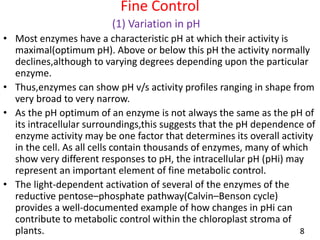This document discusses mechanisms of metabolic control, distinguishing between metabolic regulation and metabolic control. Metabolic regulation maintains homeostasis by varying metabolic pathway fluxes in response to external signals (control). Control occurs through coarse and fine mechanisms. Coarse control includes gene expression and protein turnover, altering enzyme levels over hours. Fine control more quickly adjusts individual enzymes through reversible covalent modifications like phosphorylation, altering kinetic parameters within seconds to minutes. Together these control mechanisms precisely coordinate metabolic pathways with cellular needs.
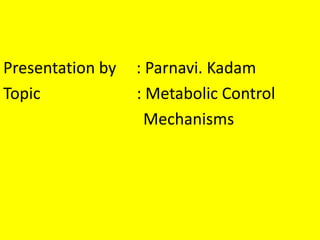
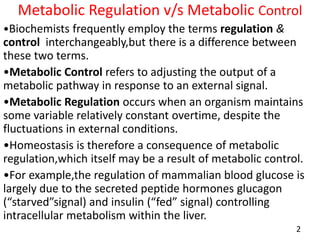

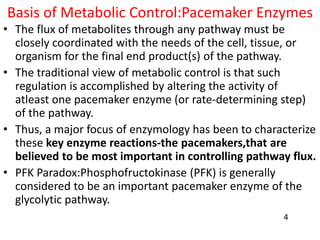
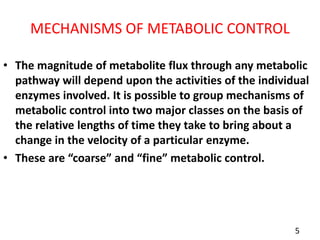
![Coarse Metabolic Control
(1) Gene Expression
• The total amount of a given enzyme is dependent upon the
relative rates of its biosynthesis v/s degradation. Thus,any
alteration in the rates of gene expression [i.e.transcription,
translation, mRNA processing or degradation]or proteolysis
can be considered as coarse metabolic control.
• In the context of metabolic control it is important to note
that an underlying assumption of many genomic studies is
that the expression of a gene at the mRNA level is a
quantitative indicator of function of the encoded enzyme.
Thus, an n-fold increase in transcript levels (detected via
Northern blots or gene chip screening) equates to n-fold
more enzyme & hence n-fold more activity. However, it is
becoming apparent that this assumption does not always
reflect reality. 6](https://image.slidesharecdn.com/metaboliccontrol-180311205621/85/Metabolic-control-6-320.jpg)

